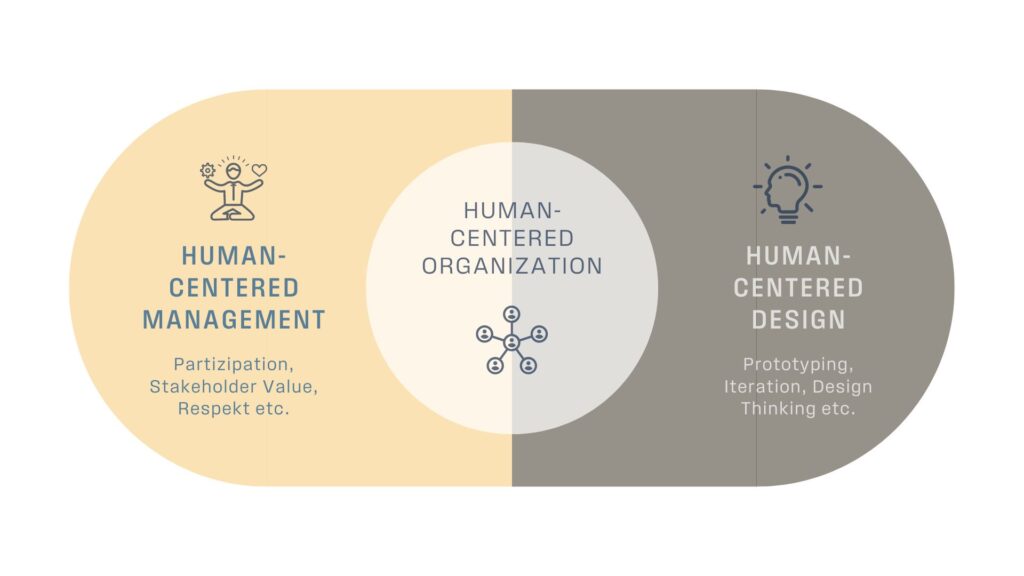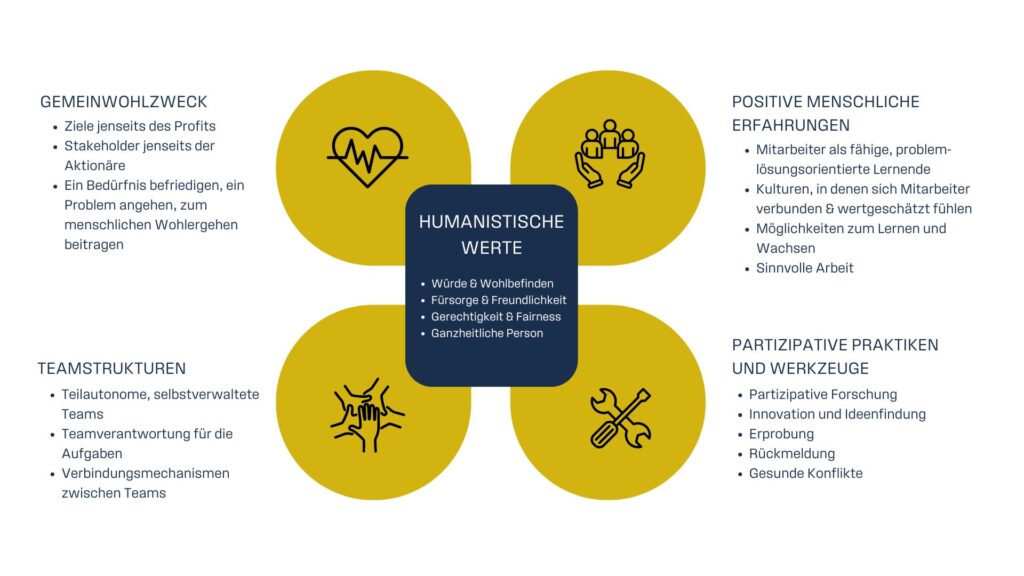Background
The term Human-centered Organization (HCO) first appeared in the late 1950s and has gained more attention in the last ten years. But what is behind it all? Here I explain the most important points.
An analysis of the literature on human-centered management (HCOs) reveals two primary perspectives: Human-centered Design (HCD) and Human-centered Management (HCM). These two approaches offer different but complementary perspectives on the design and management of organizations.
The HCD perspective emphasizes the importance of designing products and services that are geared towards the needs of users. This approach has been popularized by companies such as IDEO and the Stanford University Design School and adopted by companies such as IBM and PepsiCo. HCD begins with a creative and participative exploration of the users’ needs and wishes. The entire process is centered around empathy for the users and a deep understanding of their perspectives and experiences. Methods such as prototyping, iterative development and continuous adaptation are central elements of this approach.
In contrast, humanistic management emphasizes human dignity, respect and justice within organizations. This approach criticizes the traditional, Taylorist organizational structure, which often views employees as mere cogs in the production process. Instead, humanistic management sees employees as creative problem solvers and innovators who are able to take responsibility and make meaningful contributions. Organizations should be understood as communities in which human values such as compassion and diversity are promoted. The aim is not only to maximize profits, but also to ensure social responsibility and the well-being of all stakeholders.

These two perspectives, although different, complement each other and can be brought together to form an integrated framework. The synthesis of the HCD and humanistic management approaches results in a comprehensive model that comprises the following core elements:

A few practical examples illustrate these approaches. The e-learning company Sweet Rush has developed a culture based on care, inclusion and justice. The company promotes a psychologically safe environment in which employees learn techniques to address sensitive issues such as underperformance and discrimination. Another example is Volvo’s Uddevalla factory, which has introduced a model of flexible specialization. Small working groups are responsible for the production of an entire car, which promotes joint problem solving and holistic product development.
You can download a very good basic scientific article on the subject of human-centered organization free of charge from Springer.
Copyright © Markus Väth
Telefon:
+49 (0) 176 2323 6087